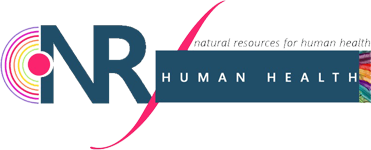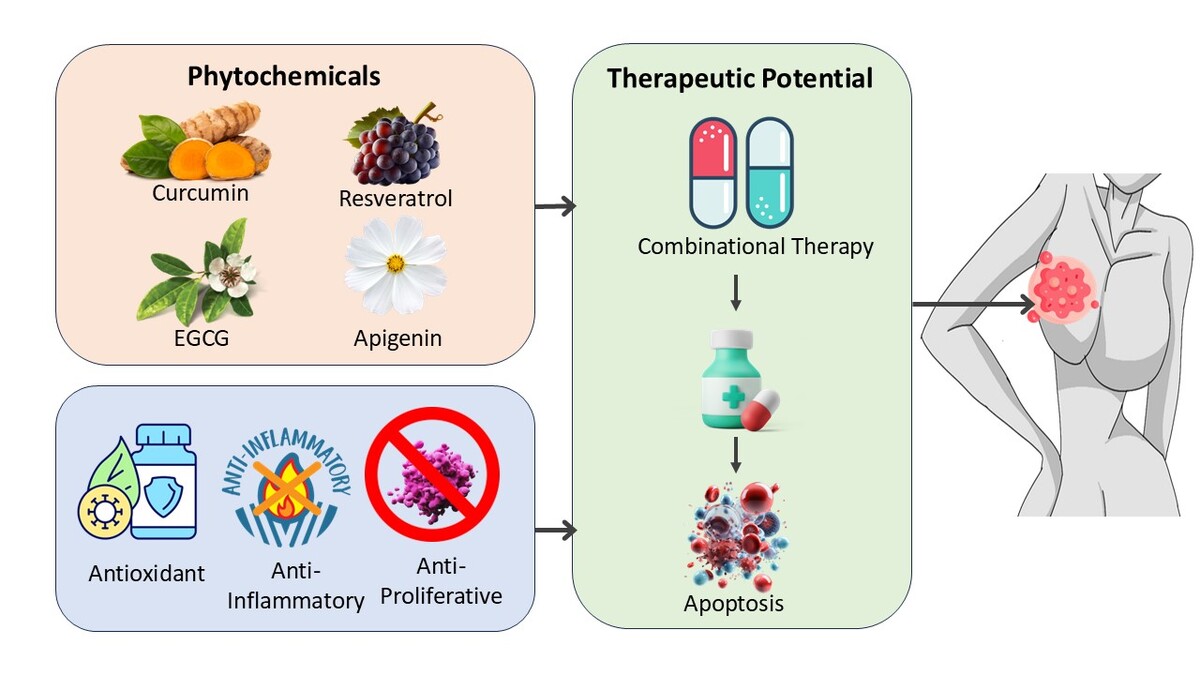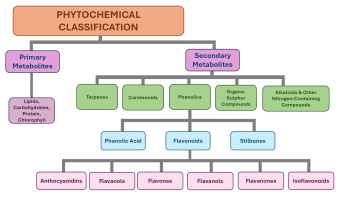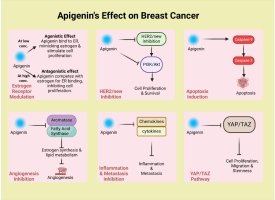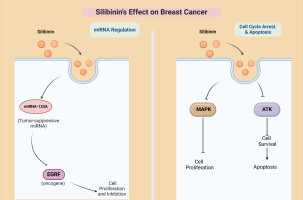Introduction
In 130 countries worldwide, it is found that cancer is the second leading cause of premature death (Bray et al., 2021). In India, the mortality rate of cancer is 68% of the yearly occurrence, which means that 30% of the patients will only survive 5 years or longer after the diagnosis. (Ramani et al., 2023). Noncommunicable diseases (NCDs), which include cancer, diabetes and cardiovascular disease were first acknowledged as a serious health issue by the World Health Organisation (WHO) in 1999. In 2012, NCDs contributed to over 38 million annual deaths, or 68% of the total deaths globally. (Morgan et al., 2018).
The United Nations’ Sustainable Development Goal (SDG) 3 (Good health and well-being) promotes the well-being and ensures healthy lives of people of all ages, which is one of the top goals for the entire). Furthermore, the World Health Assembly elevated cancer care on the global health agenda in 2017 by passing resolution 70.12, which allowed WHO to prioritize cancer prevention and control programs. (Murthy et al., 2024). The five most common dietary and behavioral hazards contribute to almost one-third of deaths caused by cancer one of which is low fruit and vegetable intake. Most of the prevalent cancers, that include breast cancer, have been cured when discovered early and have shown effective results (Pereira et al., 2021). One of the targets of SDG related to cancer is to achieve universal health improvement which will protect people financially, provide the opportunity for better healthcare services, and ensure that everyone has access to medications and vaccinations at a cheap, safe, and effective practices. (Frieden et al., 2020).
Reports from the World Health Organization in 2020 depicted that 2.3 million women were detected with breast cancer internationally which resulted in 6,85,000 deaths. Data from Scientific investigation reflects that the average age of women who have been diagnosed with Breast cancer is 61 years. Breast cancer is extremely fatal with no effective therapeutics developed as of now. (Arnold et al., 2022).
Breast cancer stands as a prevalent human malignancy and comes in second place after lung cancer (Sohel et al., 2023). Modern techniques of breast cancer treatment encompass a diverse range of methods, including radiotherapy, surgical procedures, chemotherapy, antiestrogen therapy, aromatase inhibitors, anti-angiogenesis, pharmaceuticals, and the utilization of anthracyclines (Cazzaniga et al., 2012).Although, these therapies have their negative effects and are very costly, and also cause negative health implications. To avoid this, natural products emerge as an effective alternative therapeutic, marked with fewer associated side effects (Cazzaniga et al., 2012).
Plants naturally produce thousands of active natural compounds of low molecular weight, and have a structural diversity known as phytochemicals. They protect the plants from various kinds of bacterial, fungal, and viral infections, environmental stress, and UV exposure and produce an immune response against them. These can also regulate various kinds of molecular mechanisms that can prevent different kinds of diseases (Wink et al., 2015).
Up to date, there are more than 4,500 phytochemicals that are on the record. They are categorized according to the protective roles they play. Common sources of phytochemicals are carrots, turmeric, green tea, tomatoes, grapes, cherries, garlic onion, whole wheat, cabbage, raspberries, beans and soy foods, etc. (Mazurakova et al., 2022).
Classification of phytochemicals
Broadly, Phytochemicals are divided into primary and secondary metabolites based on their role in plant metabolism (Younas et al, 2018). The phytochemicals are further classified into sub-classes according to their structures (A. Hussein et al., 2019).
Classification of various phytochemicals has been given in Figure 1.
Different phytochemicals effective against breast cancer
Curcumin
Curcumin is an orange-yellow pigmented crystallized compound that is found in the rhizome of turmeric (Curcuma longa L.) and is mainly utilized as a food coloring agent in Indian sub-continents (Michele Dei Cas). Curcumin is poorly soluble in water. When taken by the oral route, it is absorbed by the wall of gastrointestinal tract and its metabolization takes place in the liver. Curcumin holds the capability of modulating the various kinds of signaling pathways and molecular processes in breast cancer (Mishra et al., 2023). Studies have shown that curcumin can regulate various pathways including the PI3K/ATK, nuclear factor [NF]-kB and many more (Hu et al., 2018). Through inducing an arrest in the cell cycle at the G2/M phase, it can also promote the proliferation of cancerous cells (Mosieniak et al., 2012). Many studies have shown that curcumin efficiently causes TNBC cell lines to go through autophagy and apoptosis, which includes MDA-MB-231 (Zhu et al., 2024). When curcumin was tested on MCF7 cells the expression of pro-apoptotic protein and apoptosis regulator Bax was found to be high. ( Song et al., 2023)
Genistein
Native to sub-Indigenous continents, genistein is a natural isoflavone mainly found in soybeans. In 1899, Genistein was first extracted from Genista tinctoria (L.). It shows anti-oxidant and anti-cancerous properties (Tuli et al., 2019). Genistein can show the cell cycle arrest in G0/G1 and G2/M phase arrest through cyclin B (Jiang et al., 2018). It shows antiproliferative effects by first obstructing NF-kB pathways and then stimulating NF-kB. It can also modulate the eEGFR/Akt/NFkB pathway which contributes significantly to cell proliferation and ultimately causes cancer cells to die (Bhat et al., 2021).
Quercetin
Quercetin, a polyphenolic compound predominantly found in nuts, teas as well as herbs. It demonstrates various positive impacts that include, antioxidant, anti-diabetic, anti-inflammatory, and anti-proliferative effects. Quercetin is a lipophilic compound that can cross the cellular membrane and initiate several intracellular signaling pathways. Numerous studies have concluded that Quercetin has the anti-cancer properties (Shafabakhsh et al., 2019). Research has demonstrated that it can limit the expansion of breast cancer cells in humans (Maugeri et al., 2023). Quercetin demonstrated dose-dependent anticancer effects in LoVo and MCF-7 cells. The addition of Qurecetin-5 to 8-disulphonate can significantly increase the water solubility and anticancer properties of Quercetin. In cancer cells, quercetin induces apoptosis and cell cycle arrest at the S phase (Zhang et al., 2012).
Resveratrol
Resveratrol, a polyphenol phytoalexin is found in various foods including grapes, pistachios, and in small amounts in bilberries and blueberries. It demonstrates a wide range of activities that include anti-oxidative, anti-inflammatory, anti-aging, and cardiovascular protective properties (Meng et al., 2021). It is a compound that has the potential to improve the effects of breast cancer and open up the way for the development of new therapies (Ren et al., 2021). Resveratrol can modulate and target the STAT3 pathway in breast cancer cells. Additionally, it can also influence STAT3’s upstream regulators, that can affect the growth, advancement, and spread of breast cancer cells (Kohandel et al., 2021). The genes that show differential methylation were involved in key cellular pathways including Wnt, MAPK, and JAK/STAT. (Lubecka et al., 2016). With the treatment of Resveratrol, oncogenes including AKT1, STAT3, and NOTCH2 show hypermethylation, which aligns with the pathways identified in comprehensive genomic analysis (Kendall et al., 2024).
Kaempferol
Kaempferol is a flavonoid that has multiple beneficiary health effects. It is present in plants including tea trees, saffron, aloe vera, onion leaves, brown mustard, pumpkin, and many others (Periferakis et al., 2022). Kaempferol and its derivatives have shown many beneficiary effects including anticancer, antioxidant, antidiabetic, neuroprotective, and antitumor characteristics (Imran et al., 2019). Kaempferol inhibits the development of MCF-7 breast cancer cells, potentially by stimulating apoptosis and by downregulating the expression of Bcl2 (Yi et al., 2016). Kaempferol inhibits the cell cycle in cancerous breast cells at the G2/M stage by downregulating CDK1 (Wang et al., 2019). It was observed that kaempferol reduces IQGAP3 levels in breast cancer cells, causing increased cell death and suppressed cell proliferation (Hu G et al., 2019).
Apigenin
Apigenin, (4',5,7,-trihydroxyflavone) is a common flavonoid that is present in various kinds of plants, fruits, and herbs. It shows many beneficiary effects including anti-apoptotic, antioxidant, and anti-cancerous properties (Lee et al., 2023). It has proved its effectiveness in breast cancerous cells. Firstly, in estrogen-responsive breast cancer cells, include those that have become resistant to anti estrogen medications like fulvestrant or tamoxifen. Increased concentrations of apigenin suppress the proliferation of cancerous tissue or cells and demonstrate synergistic effects when administered together with fulvestrant and tamoxifen, indicating that it can handle breast cancer that is resistant to estrogen. Apigenin exhibits significant inhibitory activity in the breast cancer cells which have the overexpressing of HER2/neu by inducing apoptosis on a time and depending on the dosage system. The compound’s capacity to modulate PI3K activity, Akt function, and HER2/neu autophosphorylation emphasizes its future potential as a treatment for HER2/neu-positive breast cancer. Additionally, apigenin inhibits proliferation and stimulates apoptosis by inducing death in breast cancer cells through the caspase cascade, activating caspase-9 subsequently followed by caspase-3 (Rahmani et al., 2022). Apigenin offers the potential of utilizing transcriptome reprogramming which deals with the aggressive and resistant treatment of triple-negative breast cancer (TNBC). Apigenin modulates the alternative splicing (AS) patterns. Abnormal alternative splicing (AS) events foster the development of tumors and resistance to cell death constitutes the characteristic features of TNBC. By broadly reprogramming TNBC-related AS to favor isoforms associated with cell death while sparing normal breast cells, apigenin counteracts this through molecular interactions with core spliceosome subunits and RNA-binding proteins (RBPs) (Sudhakaran et al., 2023). It suppresses the two essential enzymes, aromatase and fatty acid synthase that contribute to the development of breast cancer. Furthermore, through the induction of progestin, apigenin can prevent angiogenesis by the suppression of VEGF expression. Apigenin inhibits chemokines and inflammatory cytokines, thereby preventing metastasis, a major cause of death from breast cancer. Also, by inhibiting the YAP/TAZ pathway, apigenin reduces the proliferation, migration, and stemness characteristics of TNBC cells (Adel et al., 2022). Figure 2 denotes effect of Apigenin on pathways and progression of Breast Cancer.
Silibinin
Silibinin is a common flavonoid present in milk thistle. It shows many positive impacts in regulating diabetes, and liver damage and shows anti-tumor activities. Although its advantages are widely recognized, its precise anti-tumor mechanism is yet to be determined. By application of network pharmacology, many researchers looked into the mechanisms and targets of silibinin's cancer-treating effects. This was supported by the experimentation on mice and adenoid cystic carcinoma cells. Li et al.'s 2024 study provides insights into the potential application of silibinin in the treatment of cancer by examining the tumor-treating mechanism of the drug for the first time through the use of network pharmacology and experimental validation (Li et al., 2024). Silibinin causes cell cycle arrest by targeting the significant signaling pathways involving MAPK and AKT pathways while causing much less damage to normal cells It has been shown to interact with tumour-suppressive microRNAs such as miR-133a, currently however, it is unknown how precisely these interactions are contributing to the suppression of breast cancer. Given its impact on miR-133a and associated downstream targets, like EGFR, silibinin may still prove to be a useful therapeutic component but to be able to fully understand it’s effect on miR-133a in the therapy of breast cancer, more research will need to be done (Hossein-Tehrani et al., 2024). Silibinin is a potential therapeutic agent for the treatment of breast cancer as it helps regulate miRNA, causes apoptosis, and decreases the chances of cell invasion and proliferation (Ray et al., 2024). Figure 3 denotes effect of Silibinin on Breast Cancer.
EGCG
Epigallocatechin-3-gallate (EGCG), is a polyphenolic compound that is present in green tea. It has been said to show great levels of anti-cancerous activities and also has the ability to regulate various signaling pathways. It has also been observed that when EGCG is combined with other natural and synthetic drugs, it will boost the efficiency of traditional medicine and also reduce their side effects (Zhang et al., 2007). Additionally, EGCG has demonstrated a wide range of impacts on various essential signaling pathways which may include phosphatidylinositol-3 kinase (PI3K) as well as MAP kinase. Furthermore, EGCG also decreases the escalated levels of ERK1/2 and Jak/STAT3 pathways which are strongly related to malignant processes (Ediriweera et al., 2017). EGCG alters signaling pathways that affect cell growth and differentiation and inhibits the cell cycle progression. In addition, EGCG suppresses VEGF transcription, triggers apoptosis, and adversely affects several stages of metastasis (Romano et al., 2021).
Lycopene
Lycopene a natural red pigment compound of the carotenoid family that is present in watermelon, papaya, pink grapefruit, and guava (Carvalho et al., 2021). The behavior of MCF-7 cells was studied in relation to lycopene at various concentrations and treatment times. Researchers discovered that lycopene dramatically reduced cell growth using MTT assays and that this effect was connected with both dosage and exposure duration. Notably, throughout 72 hours, a 16 mM concentration resulted in the most noticeable decrease in cell proliferation. Subsequently, flow cytometry was used to detect the apoptosis and the results revealed a significant variation in the rate of cell death between the lycopene-treated group and the control group. The rise in apoptotic response is induced by the increased lycopene doses which indicate a clear interrelation between the dosage and exposure duration. Semi-quantitative mRNA level assessment, which was also examined in this study, revealed that cells treated with lycopene had greater levels of p53 and Bax, both of which were associated with duration and dose in breast cancerous cells (Peng et al., 2017).
Thymoquinone
Thymoquinone is a compound isolated mainly from black cumin seeds. Thymoquinone shows many beneficiary effects including antioxidant, anti-cancerous, pain-relieving, as well as fever-reducing properties (Ali et al., 2021). The 35 derivatives of thymoquinone showed acceptable physicochemical and absorption properties without hepatotoxicity, which qualified them as oral medications. Based on molecular docking against 3PP0 proteins, the derivatives of thymoquinone demonstrated greater activity as compared to thymoquinone. TQ 15 was the one with the greatest anticancer activity among them, as indicated by its highly substantial negative reactive species value. Lipophilic and steric factors were found to be essential in determining the activity of the 35 thymoquinone derivatives by QSPR analysis (Wulandari et al., 2021). The upregulation of PTPRR inhibits the p38-MAPK and MAPK pathways while downregulating Bcl-2, and upregulating the TP53, thus enhancing apoptosis. TQ also affects PI3K/AKT, Wnt, MAPK, and p53 which are important pathways that are necessary for survival and the growth of cancer-causing cells. It works in combination with paclitaxel and tamoxifen to increase their effectiveness by inducing apoptosis and modifying tumor suppressor genes. As TQ inhibits TGF-β and mesenchymal indicators while restoring epithelial markers, it has anti-metastatic characteristics that prevent the spread of cancer (Younas et al., 2018).
3’3-diindolylmethane
Brussels sprouts, broccoli, cauliflower, and cabbage contain heterocyclic and biologically active compounds like indole-3-carbinol (I3C) and 3,3'-diindolylmethane (DIM) (Reyes-Hernández et al., 2023). Through a variety of methods, 3,3'-Diindolylmethane (DIM), which is produced from indole-3-carbinol, exhibits hope in the treatment of breast cancer. DIM significantly reduces the growth of cancerous cells which was proved by investigations utilizing cell lines of breast cancer (MCF-7, BT-474, T47D, BT-20), by promoting p27kip protein expression before the commencement of apoptosis. DIM also modifies signaling pathways. It also reduces Akt activity and increases p27kip transcript levels in BT-20 cells that had Her-2 overexpression and activated Akt. These results point to the probability of DIM as a chemopreventive drug for breast cancer, regardless of the estrogen receptor expression or Her-2 (Wang et al., 2008).
α Mangostin
The fruit regarded as the "queen of fruits," Garcinia mangostana Linn, contains α-mangostin, a xanthone derivative that is isolated from its skin. In various cancers, including those of the breast, colon, lung, pancreatic, skin, and blood, it has demonstrated multiple anticancer capabilities (Meylina et al., 2021). Mangosteen peel is rich in natural polyphenols such as xanthones as well as vitamins, minerals, phosphorus, and iron. The class of oxygenated heterocycles is made up of the secondary metabolites of xanthones. [1,3,6,7-tetrahydroxy-2,8-di (3-methyl-2-butenyl)] one α mangostin metabolite found in xanthones. C24H22O6 is the chemical formula for α mangostin (Herdiana et al., 2021). The research by Simon examined how α-mangostin breast cancer cells, and it revealed the dose-related reduction in cells viability, especially in spheroid models. According to flow cytometry analysis, α-mangostin causes MCF-7 cells to exhibit apoptosis indicated by positive annexin-V staining, caspase activation, as well as nuclei condensation. Myc-BCL-XL clones showed resistance to α-mangostin-induced apoptosis, while stable MCF-7 clones overexpressing HA-MOAP-1 showed increased susceptibility. In MCF-7 cells, BCL-XL opposes the activation of MOAP-1-mediated apoptosis caused by α-mangostin (Simon et al., 2022). To improve efficacy and lessen the endometrial side effects, a study looked at ER+ breast cancer patients being treated with α-mangostin (AM) in addition to tamoxifen. It prevented 4-OH-TMX-induced CCND1 overexpression in endometrial cells and downregulated oncogenic genes (KCNH1, CCND1, BIRC5) in breast cancer cells. These results demonstrate AM's potential to supplement ER+ breast cancer therapy in a way that would improve treatment outcomes while minimizing side effects (Vargas-Castro et al., 2023). The molecular mechanisms of alpha mangostin are shown in the given Figure 4.
Daidzein
As a multifunctional herbal therapy, Daidzein is a phytoestrogen categorized as a nonsteroidal oestrogen and a component of the isoflavone class, cures an array of ailments which include cancer, inflammation, and osteoporosis. Its various therapeutic properties comprise anti-inflammatory, antioxidant, and antihaemolytic properties. By its modulation of oestrogen control, Daidzein exhibits preventive effects against breast cancer. Despite its effects on oestrogen receptors, it also safeguards nerves and the skin, reduces inflammation, combat cancer, and reduces oxidative damage. It is naturally found in foods based on soy, including tempeh, wheat, and maize-based fortified supplemental flours, textured soy protein, miso, and tofu (Magee et al., 2016). Research conducted by Kumar, V et al., shows how Daidzein increases the level of pro-apoptotic protein Bax by increasing the apoptosis through the intrinsic pathway, which results in changes in mitochondrial membrane permeability and the release of cytochrome c. This activates caspase 3/7 and caspase 9 which leads to apoptosis (Kumar et al., 2021).
Secoisolariciresinol
Secoisolariciresinol diglucoside, derived from flaxseed, exhibits promising pharmaceutical effects like antioxidative and anti-inflammatory effects. Research highlights its ability to treat various cancers, that include lung and breast cancers, by inducing apoptosis in cancer cells. This process involves the reactive oxygen species (ROS) production, that causes the potential of the mitochondrial membrane to break and DNA damage in cells with acute lymphoblastic leukemia. Moreover, it inhibits the cell cycle proteins to promote the growth of breast cancer cells by upregulating p21WAF1/CIP1 and downregulating G1-phase cyclins and CDKs (Chen et al., 2022).
Hesperetin
Citrus fruits, including grapefruits, lemons, and oranges, are excellent sources of two flavonoid compounds hesperetin and its aglycone, hesperidin. Pharmacological actions ranging from cardioprotective to hepatoprotective, neuroprotective, anti-tumor, anti-diabetic, antimicrobial, antioxidant have been documented (Yap et al., 2021). Hesperetin works similarly against all of these subtypes and is more effective against HER2-positive cells because it inhibits the activity of HER2 tyrosine kinase. In models where tumor growth is dependent on estrogen, hesperetin also inhibits aromatase, lowering estrogen levels. In breast cancer, both flavonoids show promise in reducing metastasis and preserving tissue architecture (Yap et al., 2021).
Source and mode of action of different phytochemicals
Different phytochemicals have different sources and modes of action, which are listed in the table below. The 2D structures in the table have all been retrieved from PubChem. (National Center for Biotechnology Information [NCBI], n.d.)
Table 1
Source of Different Phytochemicals and Various cancer pathways targeted by these Phytochemicals
| S.No. | Phytochemical | Type | 2D-Structure | Sources | Breast Cancer Pathways affected by Phytochemicals | Ref. |
|---|---|---|---|---|---|---|
| 1. | Curcumin | Polyphenolic | 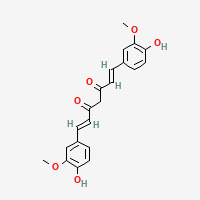 | Curcuma longa (Turmeric) | P53, Ras, AKT, Wnt-β catenin, mTOR, JAK/STAT, NF-kB, apoptosis-related signaling pathway, ERK pathway, Bcl-2, caspase, EMT pathway | Banerjee and Mandal (2022); S. Hu et al. (2018); Lambring et al. (2023); Morgan et al. (2018); X. Song et al. (2019) |
| 2. | EGCG | Catechin | 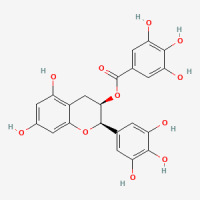 | Camellia sinensis (Green Tea) | Wnt, MAP kinase, TGF-β, MTOR, P53, PI3K, EGF receptor signaling pathway, actin cytoskeleton pathway regulation, JAK/STAT, insulin signaling pathway, axon guidance pathway, cadherin pathway, PDGF signaling pathway, notch, NF-kB, EGFR, Ras | Morgan et al. (2018); Z. Wang et al. (2008) |
| 3. | Apigenin | Flavone | 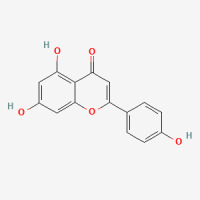 | Petroselinum crispum (Parsley), Apium graveolens (celery), Lactuca sativa (lettuce) | Estrogen signaling pathway, HER2/neu signaling pathway, Caspase cascade (caspase-9, caspase-3), PI3K/Akt signaling pathway, Transcriptome reprogramming, Alternative splicing regulation, Apoptosis induction (intrinsic, extrinsic pathways), p53 activation, Receptor tyrosine kinase inhibition, Aromatase inhibition, Fatty acid synthase suppression, Angiogenesis inhibition (VEGF suppression), Inflammation modulation (cytokines, chemokines), Metastasis suppression, YAP/TAZ pathway blockade. | Adel et al. (2022); Morgan et al. (2018); Sudhakaran et al. (2023); Ubaid et al. (2023) |
| 4. | 3,3’-diindolylmethane | Indoles | 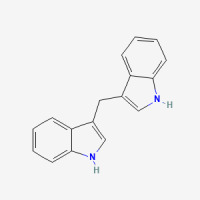 | Cruciferous vegetables | In MCF10A breast cancer cells inhibit AKT activation, induce p27kip protein and apoptosis. | Morgan et al. (2018); Vargas-Castro et al. (2023) |
| 5. | Alpha-mangostin | Xanthonoid | 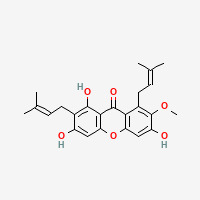 | Garcinia mangostana (Mangosteen fruit) | Enhance the anti-proliferative effect of tamoxifen, mitochondrial apoptotic pathway. | Chen et al. (2022); Morgan et al. (2018); Roy et al. (2019) |
| 6. | Kaempferol | Flavonoid | 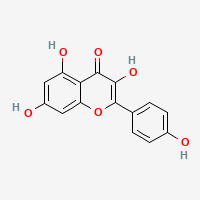 | (Camellia sinensis) Tea, (Phaseolus nanus L.) beans, Malus spp. (apples), and Aloe barbadensis (aloe vera) | ERK1/2 pathway, supresses proliferation, increases the level of gH2AX, cleave caspase 3, caspase 9 and p-ATM, activates p53, downregulates PI3K-AKT. | Lee et al. (2023); Morgan et al. (2018); Sengupta et al. (2022); Vasconcelos et al. (2020) |
| 7. | Lycopene | Tetraterpene | 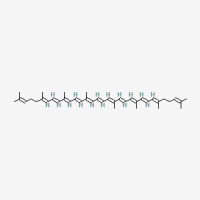 | Solanum lycopersicum (Tomatoes), Cucumis melo (melons). | NF-KB pathway was inhibited in HMC3 cells treated with nanoLEG. | Jang et al. (2022); Morgan et al. (2018) |
| 8. | Quercetin | Flavonoid | 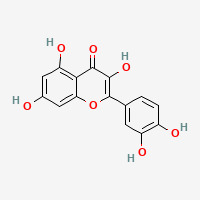 | Citrus fruits, Allium cepa L. (onions), Brassica oleracea (broccoli) | Inhibit PI3K-ATK pathway which that regulate NF-kB activity, PI3K, inhibit AKT pathway, mTOR, STAT3 | Bhat et al. (2021); Morgan et al. (2018) |
| 9. | Daidzein | Isoflavone | 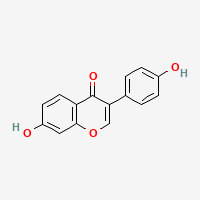 | Glycine max (Soybeans) and soy products | Estrogen receptor modulation, inflammation modulation, antioxidant pathways. | Magee et al. (2016); Morgan et al. (2018) |
| 10. | Genistein | Isoflavonoid | 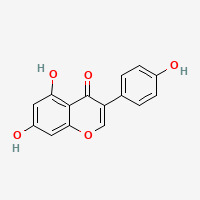 | Soy-based edibles | Wnt, supresses tyrosine kinase, modulate hedgehog-Gle1 signaling, seizes AKT and MEK signaling. | Morgan et al. (2018); Shoaib et al. (2023); H. Zhang et al. (2012) |
| 11. | Hesperetin | Flavanone glycoside |  | Citrus fruits | Apoptosis induction via ROS-mediated mitochondrial dysfunction and DNA damage, cell cycle regulation through G1-phase cyclin and CDK downregulation, and p21WAF1/CIP1 upregulation | Behroozaghdam et al. (2021); Morgan et al. (2018) |
| 12. | Resveratrol | Stilbenes | 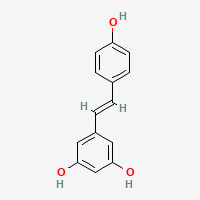 | Malus spp. (Apples), Prunus subg (plums). | JAK/STAT pathway, STAT3 pathway, Wnt pathway, MAPK pathway. | Kurzava Kendall et al. (2024); Lubecka et al. (2016); Morgan et al. (2018); Periferakis et al. (2022) |
| 13. | Silibinin | Flavonoid | 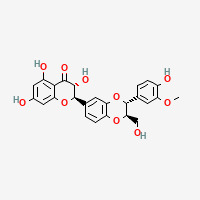 | Silybum marianum (Milk thistle) | MAPK signaling pathway, apoptosis induction, miRNA regulation, AKT signaling pathway, EGFR signaling pathway, chemo-resistance reversal, metastasis suppression, cell cycle regulation. | Hossein-Tehrani et al. (2024); Morgan et al. (2018); Ray et al. (2024); M. Zhang et al. (2007) |
| 14. | Secoisolariciresinol | Ligan |  | Brassica oleracea (broccoli) | Apoptosis induction, potential breakdown of mitochondrial membrane, DNA damage. | Morgan et al. (2018); Yap et al. (2021) |
| 15. | Thymoquinone | Antioxidant | 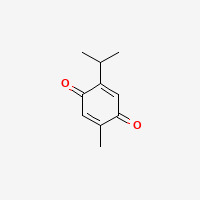 | Nigella sativa (Black seeds) | TQ stimulate breast cancer cells to paclitaxel and reverses resistance of tamoxifen. | Morgan et al. (2018); Younas et al. (2018) |
Table 2
A comparative analysis of enlisted Phytochemical’s Limitations
| S.NO | PHYTOCHEMICAL | LIMITATIONS | REFERENCE |
|---|---|---|---|
| 1. | EGCG | poor bioavailability and absorption, and unpredictable distribution in human tissues. | X. Song et al. (2019) |
| 2. | Resveratrol | Rapid absorption and metabolism, poor bioavailability, and low aqueous solubility, low potency. | Behroozaghdam et al. (2021) |
| 3. | Curcumin | poor bioavailability and absorption, may be toxic at higher doses | Agarwal et al. (2023); Silva et al. (2022) |
| 4. | Kaempferol | Poor bioavailability, low water solubility, rapid metabolism | Da et al. (2019) |
| 5. | Genistein | Rapid metabolism, poor bioavailability, and low aqueous solubility | Emerich and Thanos (2006); Ferrado et al. (2023) |
| 6. | Quercetin | Poor solubility and bioavailability, rapid metabolism | H. Zhang et al. (2012) |
| 7. | Lycopene | Poor absorption, Lack of vitamin A activity, | van Breemen (2019) |
| 8. | α mangostin | high frequency of adverse effects, restricted efficacy, multidrug resistance, and extreme toxicity to developing healthy cells | Herdiana et al. (2021) |
| 9. | Thymoquinone | Poor bioavailability, low water solubility, rapid metabolism | Chehl et al. (2009); Kundu et al. (2014) |
| 10. | Apigenin | Poor bioavailability, dose-dependent effect | Patel and Patel (2015); Shukla and Gupta (2010) |
| 11. | Hesperetin | poor bioavailability and rapid metabolism, lack sufficient selectivity for cancer cells over normal cells | Y. Song et al. (2020); Russo et al. (2020) |
| 12. | Silibinin | Poor bioavailability and pharmacokinetic properties limit its efficacy, poor solubility, rapid metabolism | Kaur et al. (2020); Ting and Jiang (2020) |
| 13. | Secoisolariciresinol | variable bioavailability, metabolism differences among individuals | Bergamo and Goglia (2021) |
| 14. | Daidzein | poor bioavailability and undergoes extensive metabolism in the body | Magee et al. (2016) |
| 15. | 3,3’-diindolylmethane | Complex metabolism and variability | Fan et al. (2021) |
Conclusion
Concerning data on the mortality rate from cancer especially breast cancer highlights the urgency of searching for novel and efficient therapeutic approaches. This review reveals the pathways by which phytochemicals affect breast cancer biology and includes them in therapeutic approaches that may enhance patient outcomes and contribute to the goals outlined in the Sustainable Development Goal 3 of the United Nation’s goals. The natural compounds reviewed here, which include curcumin, apigenin, genistein, quercetin, resveratrol, kaempferol, hesperitin, and others offer promising potential therapeutics for breast cancer. The anti-cancer capabilities of every compound have been attributed to their distinctive mechanisms of action. Curcumin and EGCG, for instance, modulate several signaling pathways, that include NF-κB and MAPK, which have significance for the survival and growth of cancerous cells. Through the production of oxidative stress and disruption of the cell cycle, resveratrol and quercetin inhibit the growth of cancerous cells, correspondingly. Through the production of oxidative stress and disruption of the cell cycle, resveratrol and quercetin inhibit the growth of cancerous cells, correspondingly. By the stimulation of apoptosis and controlling the cell cycle progression, apigenin and DIM shows a particular potential in targeting hormone receptor-positive and triple-negative breast cancer cells. In compounds like α-mangostin and silibinin, apoptosis can be induced through mitochondrial pathways which helps to overcome the drug resistance. These organic substances help in promoting universal health care and well-being for cancer treatment by showing therapeutic and preventive effects.
Authorship contributions
DP conducted initial research, data collection, manuscript drafting, and drawing the figures.
MEP contributed to data analysis and data interpretation.
VJU contributed to manuscript editing.
PS conceptualised the study, supervised the manuscript writing process, figures, and contributed to the critical review of the manuscript.
All authors read and approved the final manuscript.
